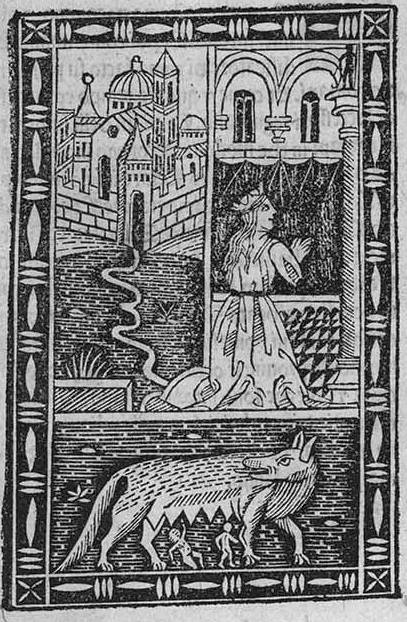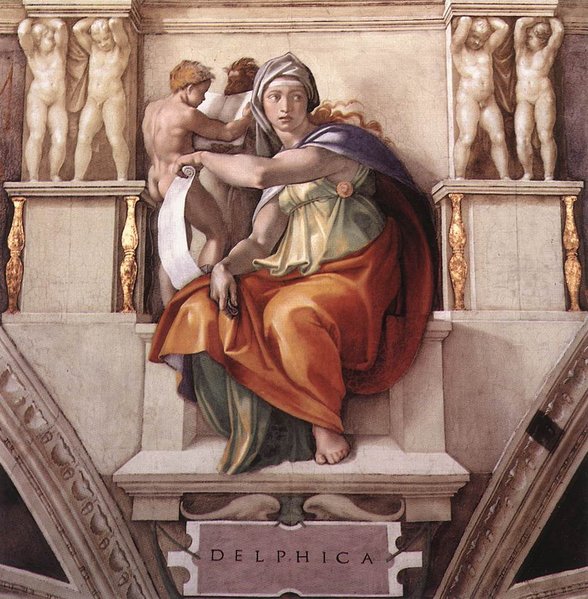|
Mirabilia Urbis Romae
''Mirabilia Urbis Romae'' ("Marvels of the City of Rome") is a much-copied medieval Latin text that served generations of pilgrims and tourists as a guide to the city of Rome. The original, which was written by a canon of St Peter's, dates from the 1140s. The text survives in numerous manuscripts. "Unhampered by any very accurate knowledge of the historical continuity of the city, the unknown author has described the monuments of Rome, displaying a considerable amount of inventive faculty," the ''Catholic Encyclopedia'' reports. The legend-filled ''Mirabilia'' remained the standard guide to the city until the fifteenth century. At the time it was written, the inhabited part of Rome, the ''abitato'', was a small city located in the bend of the Tiber River surrounded by the ruins of the great ancient city, where within the standing walls and gates of the ancient city were fields where cattle sheep and goats grazed among the temples and baths, giving to the Roman Forum its name ''C ... [...More Info...] [...Related Items...] OR: [Wikipedia] [Google] [Baidu] |
– Mirabilia Urbis Romae, 1499 – 2418743 BEIC One-day-one-paint
The dash is a punctuation mark consisting of a long horizontal line. It is similar in appearance to the hyphen but is longer and sometimes higher from the baseline. The most common versions are the endash , generally longer than the hyphen but shorter than the minus sign; the emdash , longer than either the en dash or the minus sign; and the horizontalbar , whose length varies across typefaces but tends to be between those of the en and em dashes. History In the early 1600s, in Okes-printed plays of William Shakespeare, dashes are attested that indicate a thinking pause, interruption, mid-speech realization, or change of subject. The dashes are variously longer (as in King Lear reprinted 1619) or composed of hyphens (as in Othello printed 1622); moreover, the dashes are often, but not always, prefixed by a comma, colon, or semicolon. In 1733, in Jonathan Swift's ''On Poetry'', the terms ''break'' and ''dash'' are attested for and marks: Blot out, correct, insert ... [...More Info...] [...Related Items...] OR: [Wikipedia] [Google] [Baidu] |
:Category:Gates Of Rome ...
{{Commons category, City gates in Rome Walls of Rome Rome Rome , established_title = Founded , established_date = 753 BC , founder = King Romulus (legendary) , image_map = Map of comune of Rome (metropolitan city of Capital Rome, region Lazio, Italy).svg , map_caption ... [...More Info...] [...Related Items...] OR: [Wikipedia] [Google] [Baidu] |
Horse Tamers
The colossal pair of marble "Horse Tamers"—often identified as Castor and Pollux—have stood since antiquity near the site of the Baths of Constantine on the Quirinal Hill, Rome. Napoleon's agents wanted to include them among the classical booty removed from Rome after the 1797 Treaty of Tolentino, but they were too large to be buried or to be moved very far. They are fourth-century Roman copies of Greek originals. They gave to the Quirinal its medieval name ''Monte Cavallo'' (), which lingered into the nineteenth century. Their coarseness has been noted, while the vigor—notably that of the horses—has been admired. The Colossi of the Quirinal are the original exponents of this theme of dominating power, which has appealed to powerful patrons since the seventeenth century, from Marly-le-Roi to Saint Petersburg. The huge sculptures were noted in the medieval guidebook for pilgrims, ''Mirabilia Urbis Romae''. Their ruinous bases still bore inscriptions OPUS FIDIÆ and OPUS ... [...More Info...] [...Related Items...] OR: [Wikipedia] [Google] [Baidu] |
Sibyl
The sibyls (, singular ) were prophetesses or oracles in Ancient Greece. The sibyls prophesied at holy sites. A sibyl at Delphi has been dated to as early as the eleventh century BC by PausaniasPausanias 10.12.1 when he described local traditions in his writings from the second century AD. At first, there appears to have been only a single sibyl. By the fourth century BC, there appear to have been at least three more, Phrygian, Erythraean, and Hellespontine. By the first century BC, there were at least ten sibyls, located in Greece, Italy, the Levant, and Asia Minor. History The English word ''sibyl'' ( or ) is from Middle English, via the Old French and the Latin from the ancient Greek (). Varro derived the name from an Aeolic ''sioboulla'', the equivalent of Attic '' theobule'' ("divine counsel"). This etymology is still widely accepted, although there have been alternative proposals in nineteenth-century philology suggesting Old Italic or Semitic derivation. Th ... [...More Info...] [...Related Items...] OR: [Wikipedia] [Google] [Baidu] |
Octavian
Caesar Augustus (born Gaius Octavius; 23 September 63 BC – 19 August AD 14), also known as Octavian, was the first Roman emperor; he reigned from 27 BC until his death in AD 14. He is known for being the founder of the Roman Principate, which is the first phase of the Roman Empire, and Augustus is considered one of the greatest leaders in human history. The reign of Augustus initiated an imperial cult as well as an era associated with imperial peace, the ''Pax Romana'' or ''Pax Augusta''. The Roman world was largely free from large-scale conflict for more than two centuries despite continuous wars of imperial expansion on the empire's frontiers and the year-long civil war known as the " Year of the Four Emperors" over the imperial succession. Originally named Gaius Octavius, he was born into an old and wealthy equestrian branch of the plebeian ''gens'' Octavia. His maternal great-uncle Julius Caesar was assassinated in 44 BC, and Octavius was named in Caesa ... [...More Info...] [...Related Items...] OR: [Wikipedia] [Google] [Baidu] |
:Category:Ancient Roman Tombs And Cemeteries In Rome ...
{{Commons cat, Ancient Roman tombs in Rome, Roman tombs in Rome Tombs Burial monuments and structures Cemeteries and tombs in Rome Rome Tombs Subterranea (geography) Rome Rome , established_title = Founded , established_date = 753 BC , founder = King Romulus (legendary) , image_map = Map of comune of Rome (metropolitan city of Capital Rome, region Lazio, Italy).svg , map_caption ... [...More Info...] [...Related Items...] OR: [Wikipedia] [Google] [Baidu] |
:Category:Bridges In Rome ...
List of bridges in Rome {{Commons cat, Bridges in Rome Tiber Buildings and structures in Rome Transport in Rome Rome , established_title = Founded , established_date = 753 BC , founder = King Romulus (legendary) , image_map = Map of comune of Rome (metropolitan city of Capital Rome, region Lazio, Italy).svg , map_caption ... [...More Info...] [...Related Items...] OR: [Wikipedia] [Google] [Baidu] |
Martyrology
A martyrology is a catalogue or list of martyrs and other saints and beati arranged in the calendar order of their anniversaries or feasts. Local martyrologies record exclusively the custom of a particular Church. Local lists were enriched by names borrowed from neighbouring churches. Consolidation occurred, by the combination of several local martyrologies, with or without borrowings from literary sources. This is the now accepted meaning in the Latin Church. In the Eastern Orthodox Church, the nearest equivalent to the martyrology is the Synaxarion and the longer Menologion. As regards form, one should distinguish between simple martyrologies that simply enumerate names, and historical martyrologies, which also include stories or biographical details; for the latter, the term ''passionary'' is also used. Oldest examples The martyrology, or ''ferial'', of the Roman Church in the middle of the fourth century still exists. It comprises two distinct lists, the '' Depositio ma ... [...More Info...] [...Related Items...] OR: [Wikipedia] [Google] [Baidu] |
:Category:Ancient Roman Theatres In Rome
{{Commons cat, Ancient Roman theatres in Rome, Roman theatres in Rome Theatres Theatre or theater is a collaborative form of performing art that uses live performers, usually actors or actresses, to present the experience of a real or imagined event before a live audience in a specific place, often a stage. The perform ... Theatres in Rome Ancient Roman theatres in Italy ... [...More Info...] [...Related Items...] OR: [Wikipedia] [Google] [Baidu] |
:Category:Ancient Palaces In Rome
{{Portal, History Palaces A palace is a grand residence, especially a royal residence, or the home of a head of state or some other high-ranking dignitary, such as a bishop or archbishop. The word is derived from the Latin name palātium, for Palatine Hill in Rome whic ... Palaces in Rome ... [...More Info...] [...Related Items...] OR: [Wikipedia] [Google] [Baidu] |
Seven Hills Of Rome
The seven hills of Rome ( la, Septem colles/montes Romae, it, Sette colli di Roma ) east of the river Tiber form the geographical heart of Rome, within the walls of the city. Hills The seven hills are: * Aventine Hill (Latin: ''Collis Aventinus''; Italian: ''Aventino'') * Caelian Hill (''Collis Caelius'', originally the ''Mons Querquetulanus''; ''Celio'') * Capitoline Hill (''Mons Capitolinus''; ''Campidoglio'') * Esquiline Hill (''Collis Esquilinus''; ''Esquilino'') * Palatine Hill (''Collis'' or ''Mons Palatinus''; ''Palatino'') * Quirinal Hill (''Collis Quirinalis''; ''Quirinale'') * Viminal Hill (''Collis Viminalis''; ''Viminale'') The Vatican Hill (Latin ''Collis Vaticanus'') lying northwest of the Tiber, the Pincian Hill (''Mons Pincius''), lying to the north, the Janiculan Hill (Latin ''Janiculum''), lying to the west, and the Sacred Mount (Latin ''Mons Sacer''), lying to the northeast, are not counted among the traditional Seven Hills, being outside the boundar ... [...More Info...] [...Related Items...] OR: [Wikipedia] [Google] [Baidu] |



